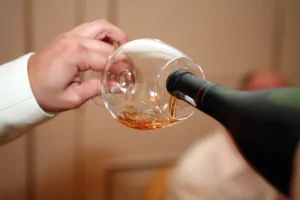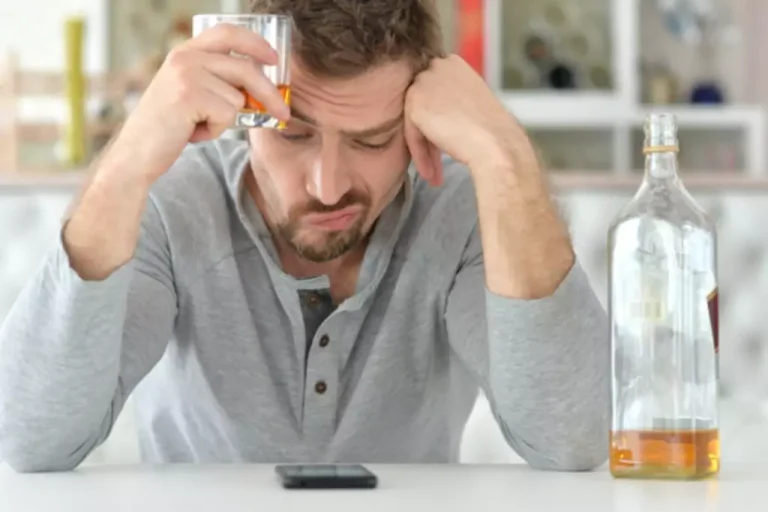
The theory https://ecosoberhouse.com/article/how-to-taper-off-alcohol/ behind Art Therapy for Coping with Shame and Guilt is that the creative process allows for a non-verbal expression of emotions that may be too difficult or painful to express through words. By creating works of art, individuals can explore their inner selves and express repressed emotions in a safe and non-judgmental environment. Through this process, they can learn to identify negative beliefs about themselves that contribute to their feelings of shame or guilt.
- It does not constitute medical, legal, or other professional advice, and does not replace, therapy or medical treatment.
- When shame becomes part of your self-identity, it can prevent you from moving forward in recovery.
- In CBT sessions for shame and guilt, the therapist will work with the client to identify negative thought patterns and beliefs that contribute to their feelings of shame or guilt.
- In this blog, we’ll explore what these emotions are, how they affect recovery, and, most importantly, how you can manage them to support lasting healing and growth.
Links to NCBI Databases
These goals could be anything from starting a new hobby that you are proud of to make the big step of going back to work. Sometimes feeling that you are being productive or learning a new skill that you have always wanted to is enough to increase the feeling of self-worth. Due to the shame, a person may be isolated from other people, causing a detrimental impact on relationships and making it hard to find strong social support.
How to Overcome Shame and Guilt in Recovery

The correlation between the slopes also represents a bidirectional effect (i.e., do both variables move together over time?). Descriptive statistics were obtained for all variables included in the analysis. Normality was examined for the variables of interest (shame, guilt, stimulant use, alcohol use to intoxication, other drug use, and injection drug use) to determine type of distribution and estimation used. Given that all substance use variables were counts (number of days used in the past 30 days), maximum likelihood estimation with robust standard errors and Monte Carlo integration was used.

How Do Guilt and Shame Affect Overall Health?
If you do not have a guideline for certain situations, think thesituation through thoroughly weighing the pros and cons of different courses ofaction. Talk to other people and find out how they would handle the situation.Once you determine the correct course of action, add this situation to yourvalue system. If a similar situation arises in the future, you will know whataction to take. Take proactive steps to make amends for past behaviors that contribute to feelings of guilt and shame, where appropriate and without causing harm to yourself or others. This emotion is also closely linked with depression and other mental illnesses, as well as substance abuse.
- Due to the shame, a person may be isolated from other people, causing a detrimental impact on relationships and making it hard to find strong social support.
- Stigma in addiction recovery remains one of the most significant obstacles to true healing.
- Both emotions can hold you back, but grasping the difference is a bold step forward.
- This can be even more damaging, leading to isolation and giving up on recovery.
Taking responsibility for the wrongs we have committed is a part of maturing and growing as a person. Admitting that you have made mistakes and done something wrong stops the cycle and frees us from our prison of guilt and shame. You can face your wrongs and take responsibility by verbalizing what you have done and preparing yourself to accept the consequences. This is important because it can influence your behaviors and reactions. For example, guilt often motivates you to apologize, correct a mistake or make amends with someone you have wronged. Shame, on the other hand, influences actions that are self-destructive and thoughts that are negative and self-deprecating.
Joining a 12-Step Program for Continued Support

Only by allowing someone to work through their difficulties themselves do we give them a chance to grow. In DBT, clients learn to identify and challenge negative self-talk that contributes to feelings of shame and guilt. They also learn how to tolerate distressing emotions without resorting to harmful behaviors. The focus of therapy is on helping clients build a life worth living, rather than fixating on past mistakes or shortcomings. Understanding the role of shame and guilt in addiction recovery requires valuable information on how these emotions work. Shame keeps individuals stuck in cycles of addiction by eroding their sense of self-worth, pushing them towards further substance abuse to cope with negative feelings.
In that case, you should cut yourself some slack and stop judging yourself so severely. Instead, work on shifting attitudes and routines to improve your ability to make wiser choices now and in the future. Overcoming the debilitating effects of toxic shame means being self-affirming and expressive, which improves our ability to be completely present with ourselves and others. It also lessens our sensitivity to anger and eventually leads to a more satisfying existence.
Eating Disorders Show Serious Oral Health Implications, Says New Study
One of the most common factors of their guilty feelings is knowing the pain and destruction that their family experienced during the time the individual was active in their drug or alcohol abuse. The individuals would often discuss how their family would separate themselves from the individual in addiction and wanted nothing to do with them. The individuals would often speak about all the time lost with their family and express remorse for not being the individual they were meant to be before falling victim to the pitfalls of addiction. Another factor the individual often had to deal with was the shame of where their addiction had taken them. In the case of the individuals with whom I worked, their lives sometimes led to multiple incarcerations. They often speak of the embarrassment of getting arrested and coming to prison yet again all due to not being able to leave their drug of choice alone.

Through cognitive restructuring techniques, the client is encouraged to challenge these automatic thoughts and replace them with more positive self-talk. Self-Compassion and Self-Care Practices are essential tools that help individuals cope with shame and guilt during addiction recovery. These practices allow individuals to embrace self-love, kindness, and care while addressing negative emotions like shame and guilt.

Making guilt and shame in recovery amends is one concrete sign to yourself and others that you’re committed to bettering yourself. You must also be open to the possibility that someone will not accept your apology. Addiction often involves things that hurt ourselves or others, like lying or neglecting responsibilities. Your brain adapts to substances with continued use, which makes stopping hard. It requires the right treatment to re-program your mind to live without them. Especially suppose there was a valid reason for your behavior in the past that was beyond your control at the time, which sometimes is the case with addictive behavior.
